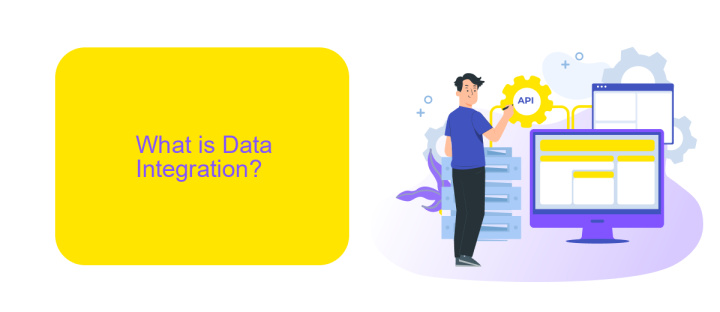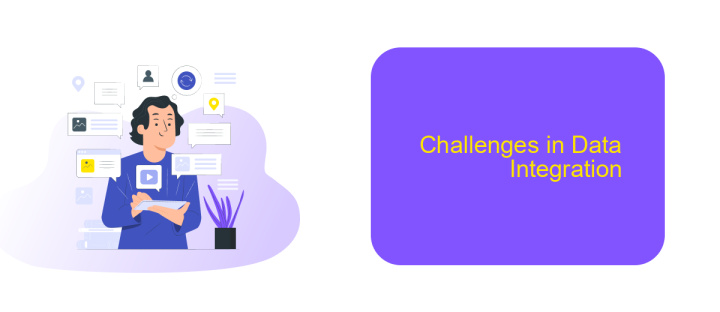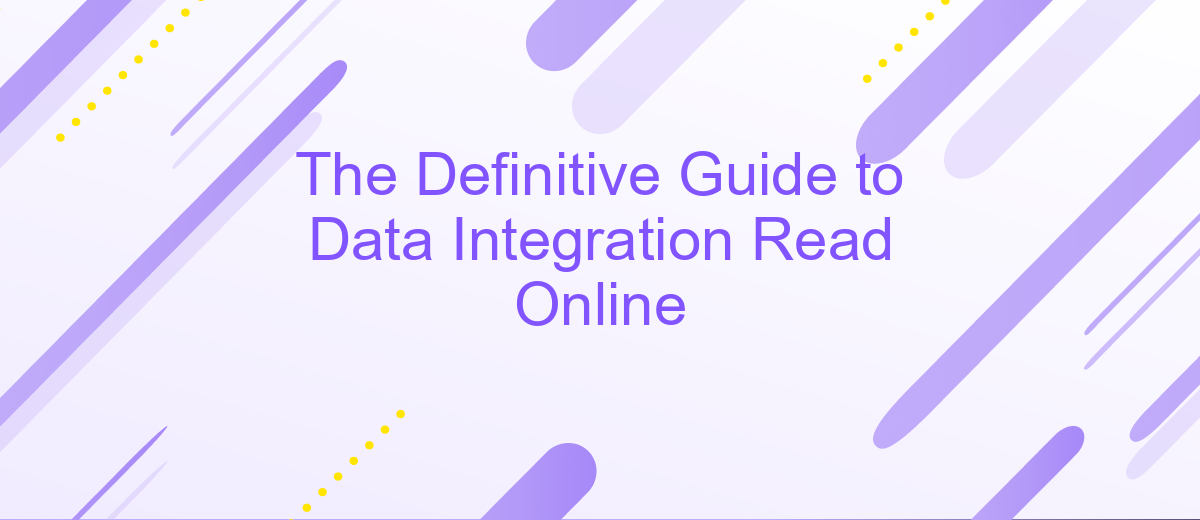The Definitive Guide to Data Integration Read Online
In today's data-driven world, seamless data integration is crucial for businesses aiming to leverage diverse data sources effectively. "The Definitive Guide to Data Integration" offers comprehensive insights into the best practices, tools, and strategies for integrating data across various platforms. This guide is an essential resource for professionals seeking to enhance their data management capabilities and drive informed decision-making.
Introduction
Data integration is a crucial aspect of modern businesses, enabling seamless communication between disparate systems and ensuring efficient data flow. As organizations increasingly rely on diverse software solutions, the ability to integrate these systems becomes essential for maintaining data consistency and operational efficiency. This guide aims to provide a comprehensive understanding of data integration, its benefits, and best practices.
- Improved data accuracy and consistency
- Enhanced decision-making capabilities
- Streamlined business processes
- Reduced operational costs
- Better customer insights
One of the tools that can significantly simplify the process of data integration is ApiX-Drive. This service offers a user-friendly interface and powerful features to connect various applications without requiring extensive technical knowledge. By leveraging ApiX-Drive, businesses can automate workflows, reduce manual data entry, and ensure real-time data synchronization. As we delve deeper into this guide, we will explore various strategies and tools to help you achieve seamless data integration.
What is Data Integration?

Data integration is the process of combining data from different sources to provide a unified view. This practice is essential for businesses that need to analyze data from various systems, departments, or external sources. By integrating data, organizations can ensure consistency, improve decision-making, and streamline operations. The process typically involves extracting data from disparate sources, transforming it into a consistent format, and loading it into a single data warehouse or system.
One of the key challenges in data integration is managing the different formats and structures of data from various sources. Tools and services like ApiX-Drive can simplify this process by automating data transfers and transformations. ApiX-Drive allows users to set up integrations without needing extensive technical knowledge, enabling seamless data flow between applications. This not only saves time but also reduces the risk of errors, ensuring that the integrated data is accurate and reliable.
Benefits of Data Integration

Data integration is a crucial aspect for businesses aiming to streamline their operations and make informed decisions. By consolidating data from various sources, companies can enhance their data quality and accessibility, leading to more accurate analytics and reporting.
- Improved Decision-Making: Integrated data provides a comprehensive view, enabling better strategic decisions.
- Operational Efficiency: Automating data workflows reduces manual tasks, saving time and resources.
- Enhanced Collaboration: With centralized data, teams can collaborate more effectively, sharing insights and information seamlessly.
- Cost Savings: Reducing data silos and streamlining processes can significantly cut costs associated with data management.
- Scalability: Integrated systems can easily adapt to growing data needs, supporting business expansion.
Tools like ApiX-Drive facilitate seamless data integration by connecting various applications and automating workflows. This service simplifies the process, ensuring that data is synchronized and readily available across all platforms. Embracing data integration not only boosts efficiency but also drives innovation and growth within an organization.
Challenges in Data Integration

Data integration is a critical process for modern businesses, yet it comes with a myriad of challenges. One of the primary obstacles is the compatibility of different data formats and systems. Organizations often use a variety of software and platforms, making seamless data integration complex and time-consuming.
Another significant challenge is data quality and consistency. Inconsistent data can lead to errors and unreliable analytics, which can adversely affect business decisions. Ensuring that data from various sources is accurate and up-to-date is crucial for effective integration.
- Data format compatibility
- Data quality and consistency
- Scalability of integration solutions
- Security and compliance concerns
Tools like ApiX-Drive can alleviate some of these challenges by offering automated data integration solutions. ApiX-Drive supports multiple platforms and formats, ensuring that data flows smoothly between systems. Additionally, it provides features to maintain data quality and security, making the integration process more efficient and reliable.


Conclusion
In conclusion, data integration is a critical component for modern businesses aiming to streamline their operations and enhance their decision-making processes. By effectively combining data from various sources, organizations can achieve a unified view that drives more informed strategies and improves overall efficiency. The tools and technologies available today make it easier than ever to implement robust data integration solutions that cater to specific business needs.
One such tool is ApiX-Drive, which simplifies the process of integrating multiple data sources without requiring extensive technical expertise. With its user-friendly interface and powerful capabilities, ApiX-Drive enables businesses to automate workflows and ensure seamless data flow across different platforms. By leveraging such services, companies can focus on their core operations while enjoying the benefits of a well-integrated data ecosystem. Ultimately, investing in data integration solutions is a strategic move that can lead to significant competitive advantages and long-term success.
FAQ
What is data integration and why is it important?
What are the common challenges in data integration?
How can I automate the data integration process?
What are the benefits of using a tool like ApiX-Drive for data integration?
How do I ensure data quality during the integration process?
Strive to take your business to the next level, achieve your goals faster and more efficiently? Apix-Drive is your reliable assistant for these tasks. An online service and application connector will help you automate key business processes and get rid of the routine. You and your employees will free up time for important core tasks. Try Apix-Drive features for free to see the effectiveness of the online connector for yourself.

